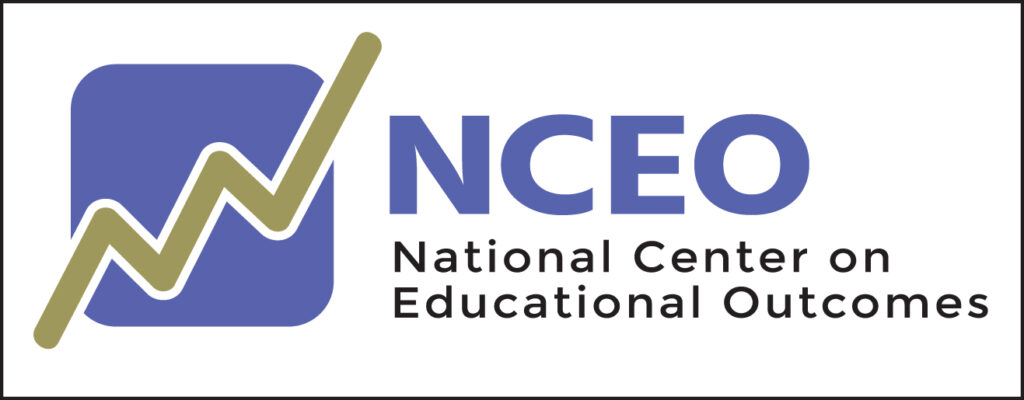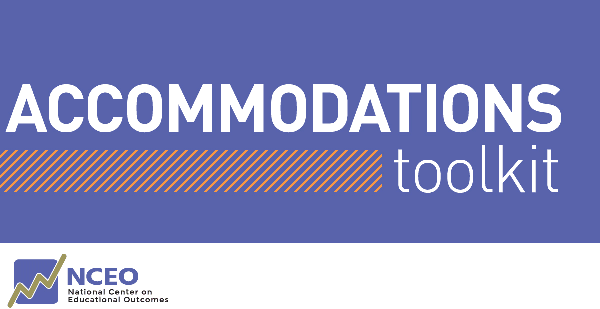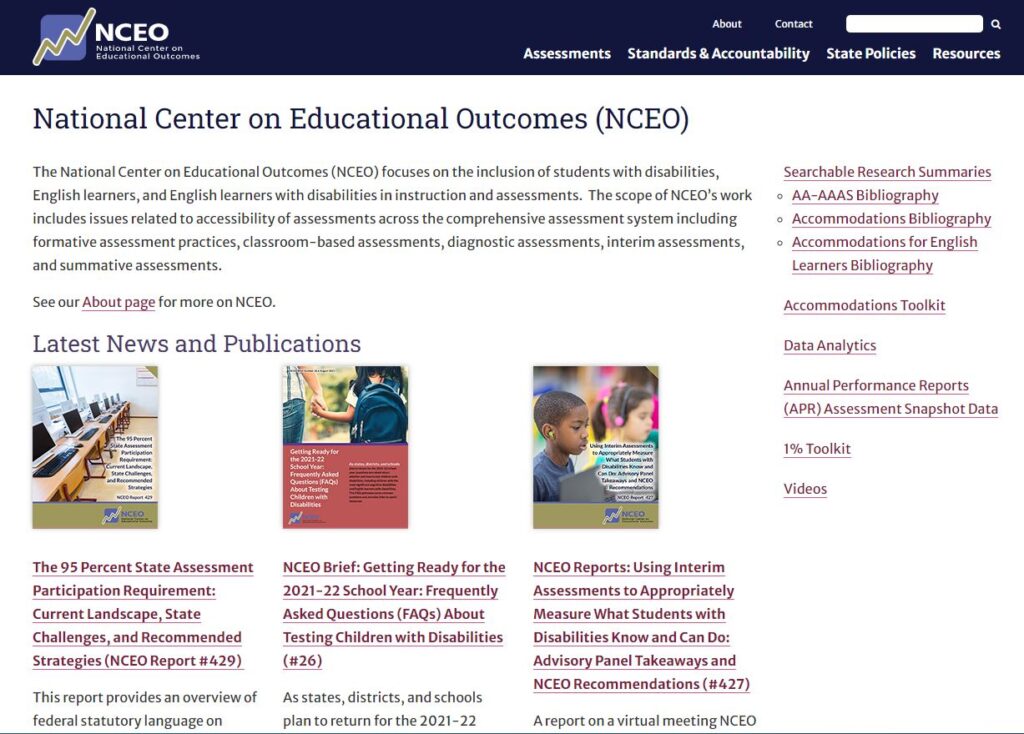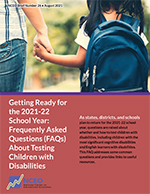Welcome
NCEO is gearing up for Fall. This issue highlights the news of NCEO’s continued funding. We are also excited to announce NCEO’s new website. It is easier to navigate and very user-friendly. We are pleased to introduce NCEO’s new accommodations toolkit which provides easy to use research summaries and policy analyses for select accommodations. This issue also summarizes a report on the 95% state assessment participation requirement, and provides an overview of a brief that contains frequently asked questions (FAQs) on testing children with disabilities during the 2021-22 school year. Enjoy!
– Sheryl Lazarus, NCEO Director
NCEO Work to Continue
NCEO has been awarded a five-year grant by the U.S. Department of Education, Office of Special Education Programs, to continue its work as a national technical assistance center. Starting October 1, 2021, NCEO’s knowledge development and technical assistance activities will focus on building the knowledge of States, districts, national policymakers, and parents about assessment issues related to students with disabilities.
New Accommodations Toolkit
NCEO recently published an accommodations toolkit. This toolkit provides easy-to-use summaries of the academic research literature on specific accommodations for students with disabilities as well as companion accessibility policy analyses.
NCEO’s New Website
We are pleased to announce the launch of NCEO’s new website, which is still at https://nceo.info/. The website has an entirely new look, and was designed to be more user friendly. As part of the redesign process, NCEO worked with the University of Minnesota’s Usability Lab and conducted usability testing with typical users of the website. By analyzing how people used the website, we pinpointed areas for improvement. The biggest change is the new Resources page where users can better search the website for what they are looking for. This page is organized by topics, content type, and other categories.
New Report on the 95% State Assessment Participation Requirement
NCEO recently published The 95 Percent State Assessment Participation Requirement: Current Landscape, State Challenges, and Recommended Strategies (NCEO Report #429). This report provides an overview of federal statutory language on student participation in state summative assessments used for accountability as well as the participation requirements for states requesting waivers from the 1% threshold on participation in the alternate assessment based on alternate academic achievement standards (AA-AAAS). It also includes a review of why it is important that students participate in testing, the reasons why some states have found it challenging to meet the 95% participation rate, and the extent to which states have met federal testing participation requirements.
Brief on Frequently Asked Questions (FAQs) About Testing Children with Disabilities During the 2021-22 School Year
NCEO recently published Getting Ready for the 2021-22 School Year: Frequently Asked Questions (FAQs) About Testing Children with Disabilities (NCEO Brief #26). This brief addresses six common questions about testing children with disabilities and provides links to related resources. As the 2020-21 school year was unprecedented and many normal procedures were disrupted, with some schools engaging in virtual learning and others shifting between in-person and virtual learning, many questions arise for the upcoming school year about testing children with disabilities.
NCEO’s National Assessment Center is supported through a Cooperative Agreements (#H326G160001, #H326G210002) with the Research to Practice Division, Office of Special Education Programs, U.S. Department of Education. The Center is affiliated with the Institute on Community Integration at the College of Education and Human Development, University of Minnesota. The contents of this report were developed under the Cooperative Agreement from the U.S. Department of Education, but do not necessarily represent the policy or opinions of the U.S. Department of Education or Office within it. Readers should not assume endorsement by the federal government.





